You
may not find this terribly rewarding unless you're included here, so this is a
good time for casual and random browsers to turn back before they get too caught
up in the sweep and majesty of the proceedings and can't let go.
Sarlat (Sarlat-la-Canéda)
First, a headlong rush to Sarlat in the Périgord-Noir region of Aquitaine. We're expected.
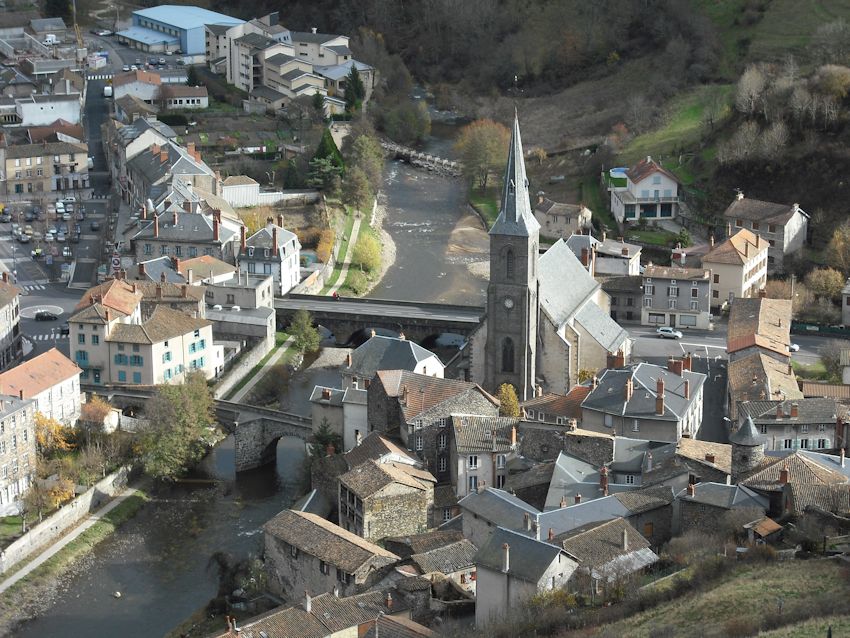
This is not Sarlat. This is Saint-Flour on the way. We stopped the night in Le-Puy-en-Velay in the Haute-Loire region, the most popular French pilgrimage site a millennium ago. Striking stuff, but raining whilst we were there, so no photos this time. The next day, on the scenic route of winding back roads over the Massif Central and the Volcanoes National Park, we're looking in briefly at Saint-Flour.

Loitering in Saint-Flour, we're wondering if it will rain before we reach our destination. It did, and it got dark, too. We did automobile laps around the medieval centre of Sarlat in nearly complete rain-pelt frustration before we found our destination.
[Some more views of St-Flour.]

La Lanterne B+B on the right, run by Terri and Roy Bowen from England, right here in the Rue Montaigne in the old city, and just across the street from -- a picture of Montaigne, who providentially happens to be my favorite philosophical person before David Hume. Montaigne's best friend in his twenties was Étienne de La Boétie, Sarlat's most famous native son, though he died at 33. His Discourse on Voluntary Servitude is considered one of the foundations of the theory of nonviolent resistance to dictators. Montaigne's own Essais, and particularly his Apology for Raymond Sebond, are milestones in the transmission of classical Skepticism to the modern age, and invaluable, and often funny, and his essay Of Friendship touchingly celebrates Boétie.
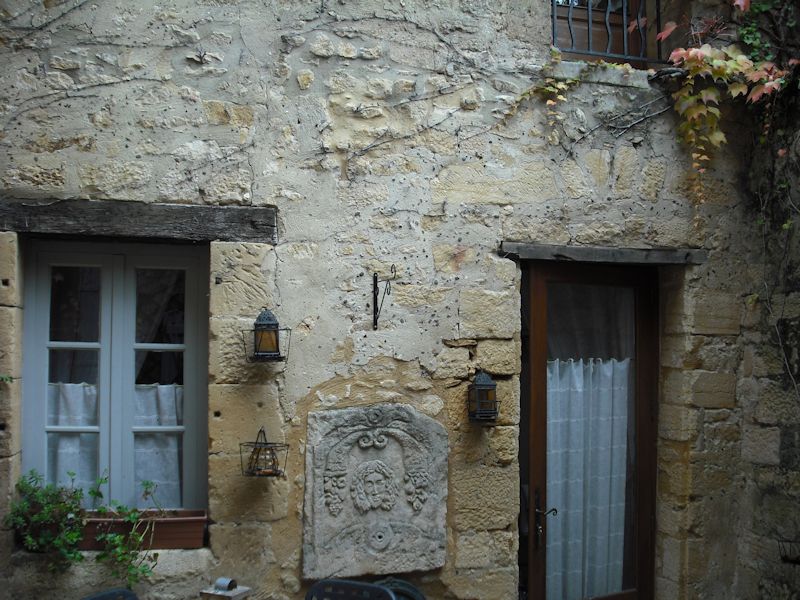
Here's our room, the Courtyard Room in the Lantern, a charming building dating from the early 16th century. Mr and Ms Bowen are friendly and welcoming hosts and extraordinarily helpful in planning out the sightseeing and restaurant excursions.

Downstairs -- small but cheery, and there is an upstairs.

The upstairs. It's small, but cheery. And there is a downstairs.

The courtyard of La Lanterne

The view from our upstairs window -- the cathedral, and a bust of Montaigne evidently, or perhaps Zardoz.

Also from our window, Sarlat's famous "Lanterne des Morts" from the late 1100s. Nobody seems to know what it was meant to be -- a funeral chapel; a memorial to St Bernard's visit here in 1147; a signal tower of some kind, with a lantern on top; a huge bread oven for huge bread (that's my contribution).

Kristin reconnoitering the old town with an eye to the restaurant menus.

How about a little amuse-gueule? I mean "snack".
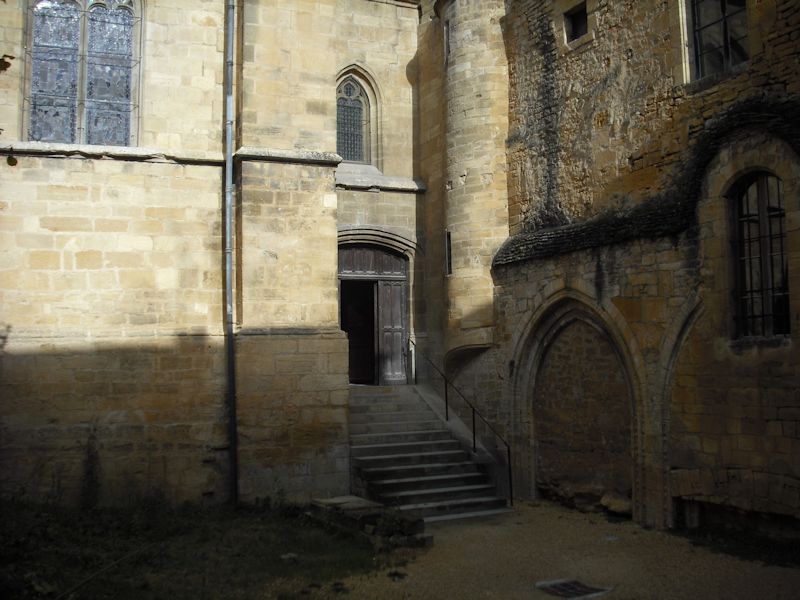
Clovis the Merovingian founded an abbey here in the 5th or early 6th century, now the site of the Chapel of the Blue Penitents from the 12th century. We're actually sneaking through the cloister area into the back of the Cathedral of St Sacerdos (named for a 6th century faith-healing bishop from Limoges), which was first built (like the Lantern of the Dead, above) in the 12th century but knocked down and rebuilt in the 16th and 17th.
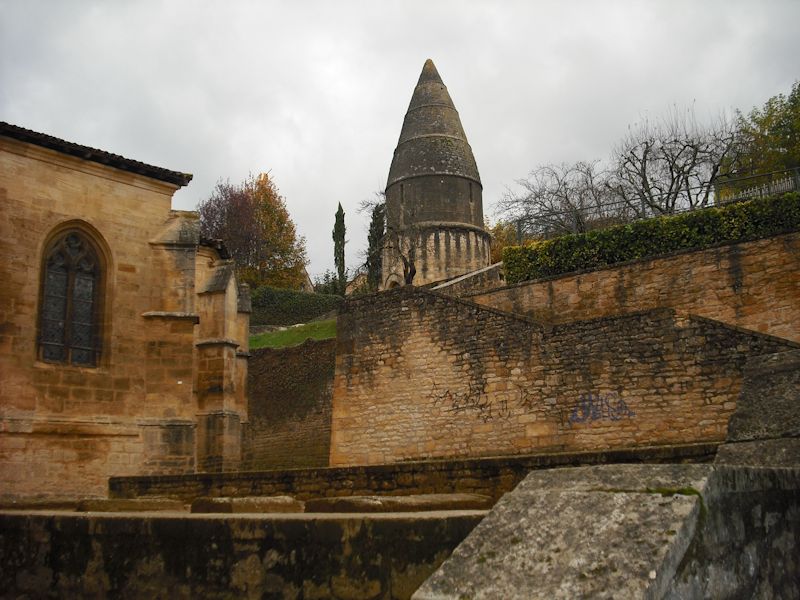
The Lantern of the Dead

Looking for the back door

Sneaking round the back of the cathedral, amongst the sarcophagi
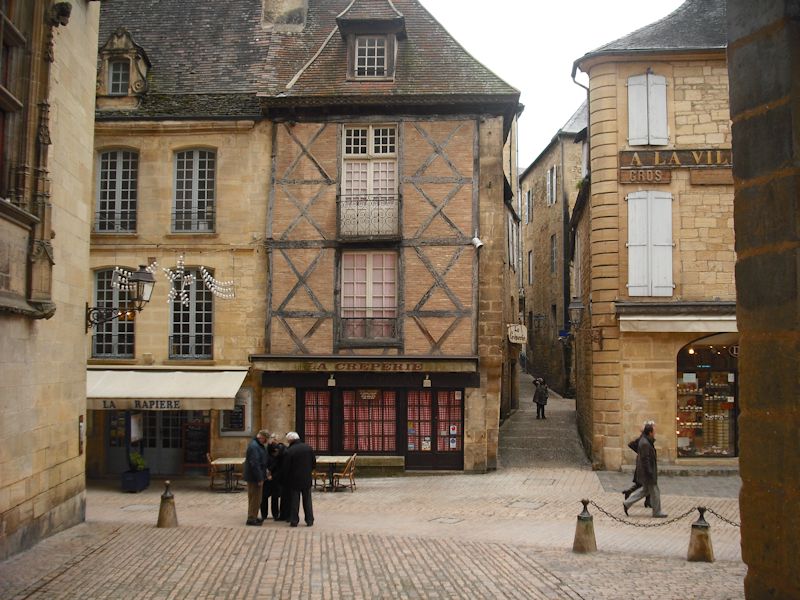
Zipped right through it, and now we're staring out the cathedral's front doors into the Place du Peyrou.

From the cathedral again, that's the lovely house that Étienne de La Boétie's dad built in the mid-1520s. (Poor Étienne's "Voluntary Servitude" discourse seems to have been commandeered by the anti-government far right, and he's acquired the nickname "Le Contre'Un", i.e. The Against One.)
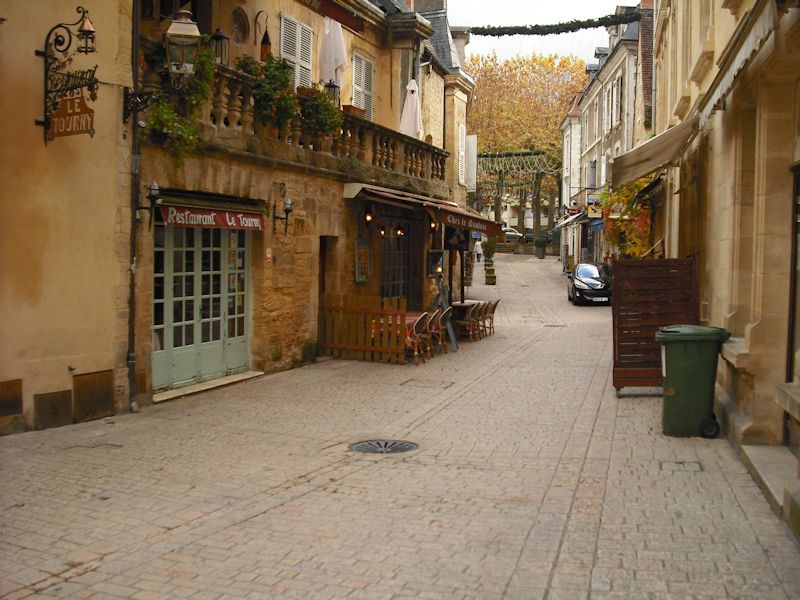
The restaurant scoping mission

Sightseeing in a complete absence of crowds of fellow tourists. A little chilly though.
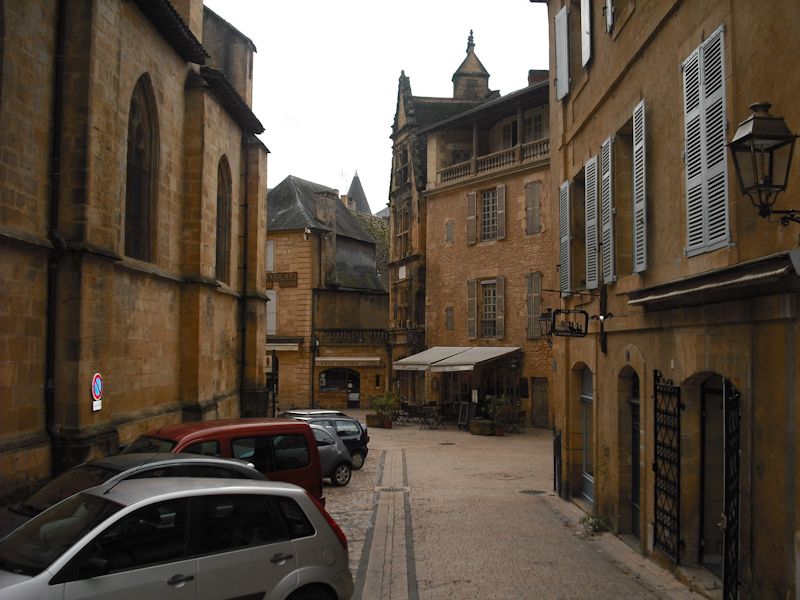
In the Rue Montaigne alongside the cathedral, we're bound for Le Bistrot restaurant straight ahead. Two nights there, not bad at all, until we found the Auberge de Mirandol 300 metres further down the way.

Street scenes
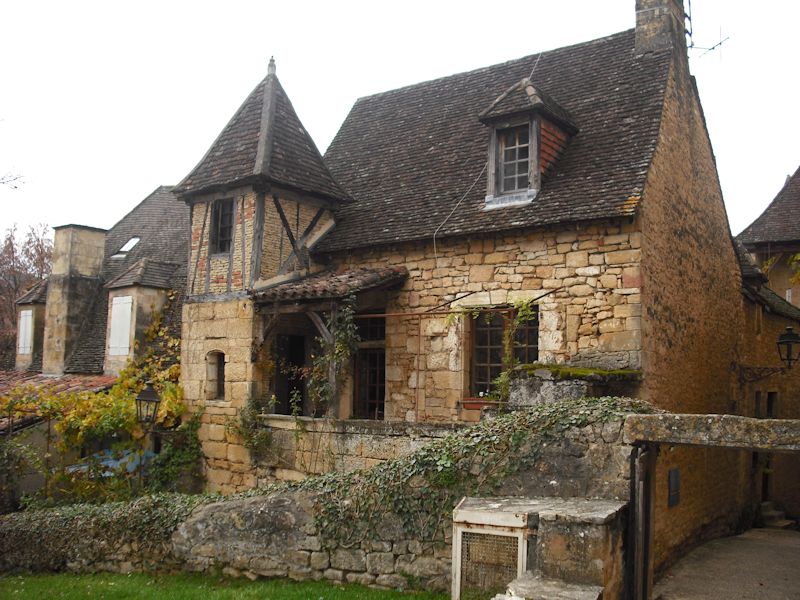
Small cottage with tower

In the Lanterne courtyard -- another day of sightseeing, and then a drive in the beautiful countrywide.

A leisurely walk through all the compact medieval city, only 700 metres along the Rue de la République from north to south, is the work of a day or two but filled with treasures, like this old neighborhood just near the 17th century Presidial.

Only sections of the medieval city ramparts are still standing, but otherwise the medieval and 16th century ambience is everywhere. The broader Rue de la République, the "Traverse", was blasted north-to-south right down the centre of the old town in 1827, in order to open up the commercial potential, but most of the old neighborhoods are intact.
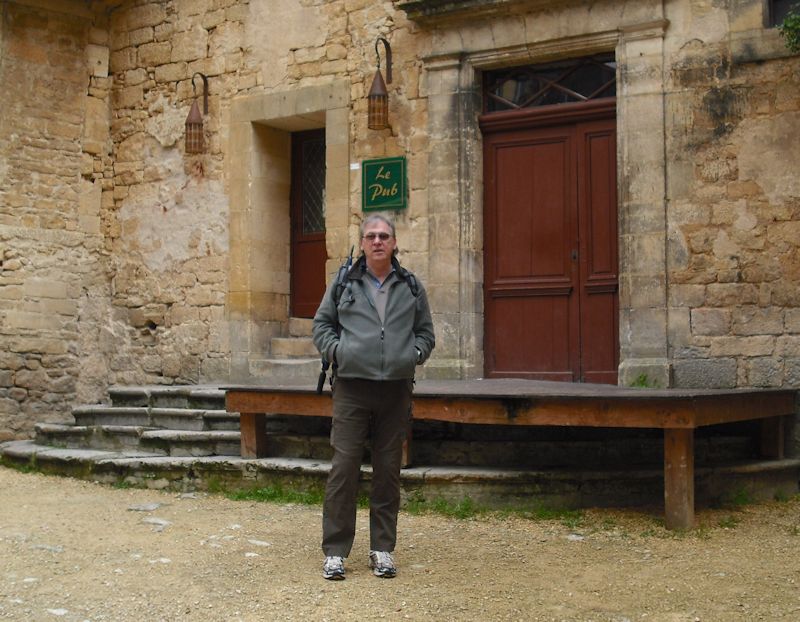
By a kind of uncanny instinct, we've found the pub. But it's still mid-afternoon.

The Place de la Liberté, one of the original centres only 200 metres north of the cathedral place
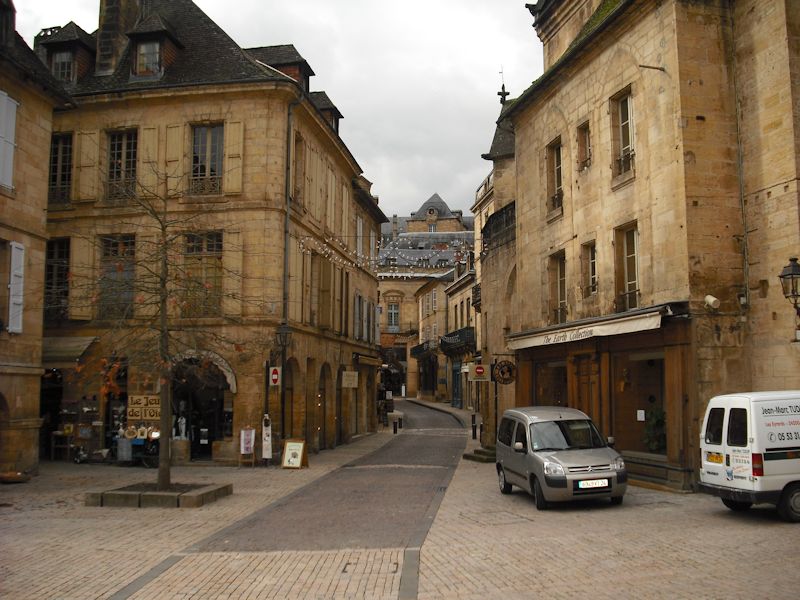
Across the northern end of the Place de la Liberté, looking west.

The church of Sainte-Marie, begun in the mid-14th century, finished in the 16th, now a summer theatrical venue and (behind those enormous doors) a permanent market for specialties of the terroir (most notably horribly swollen goose livers).

Enormous doors on the eglise. The steps up to the Rue Magnanat are said to be famous from the sword duels fought out on them in any number of movies.


The Place du Marché aux Oies, just the other side of the Sainte-Marie church

Replicas of the poor oies, with one of their greatest admirers. Sarlat is famous for its foie gras -- greatly appreciated by some but not all of us -- and this is the original Marché aux Oies, where geese were bought and sold and carried off to have their livers yanked.

A brief, preliminary scrutiny of the menu at the Auberge de Mirandol. Later, more thorough investigations won the Mirandol the palme d'or for this visit to Sarlat.

Naaah.

Some of the old ramparts
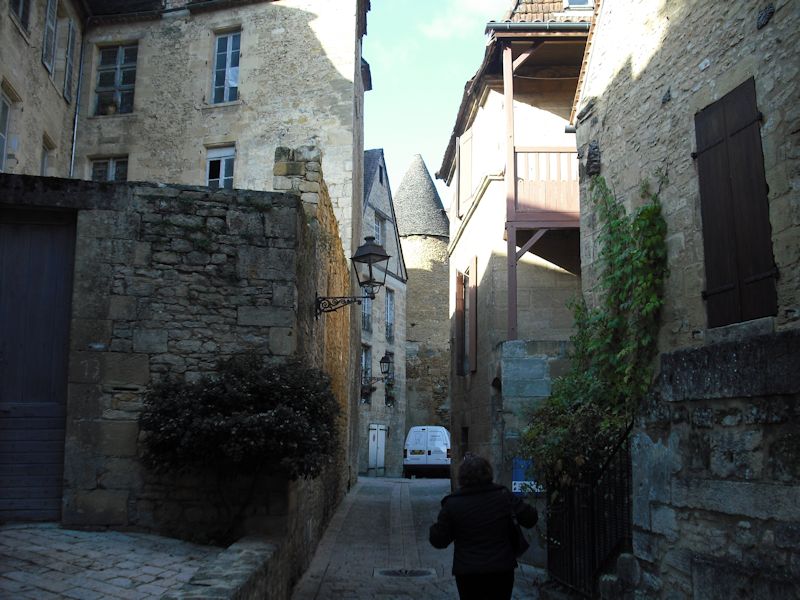
Viewing lovely old alleys, probably thoroughfares in their heyday, and beginning to growl with hunger

Machine translation: à has become "a" in capital letters and translated as "has". "Filet" has become a net. The lunch was good.

After lunch, up the hill a bit in the western side of the town

Rapt
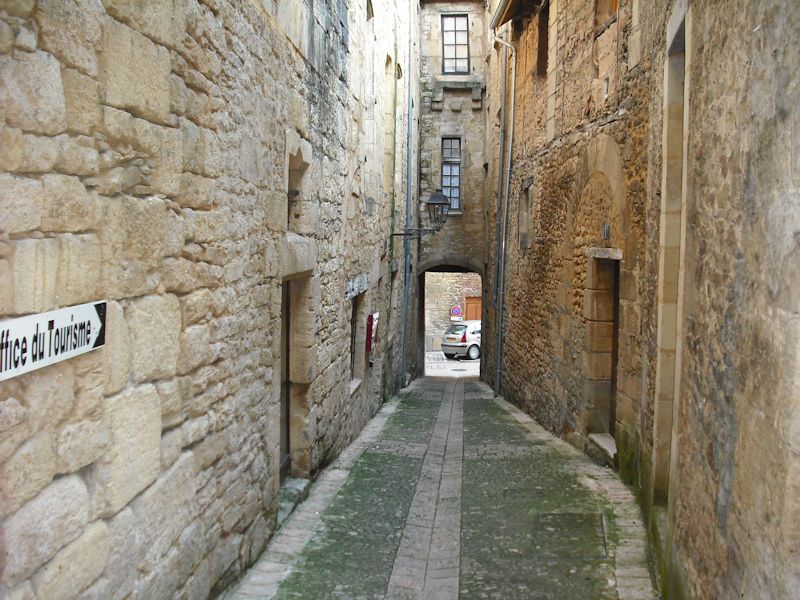
And back down to the Rue de la République

Back through the alleys to the cathedral square
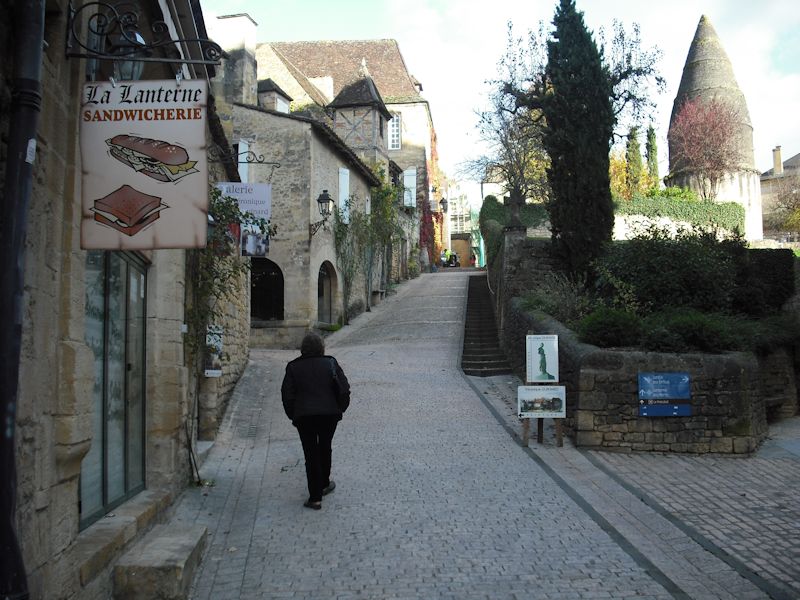
The Rue Montaigne, with the Lanterne des Morts on the right, and the Lanterne B+B at the top of the road
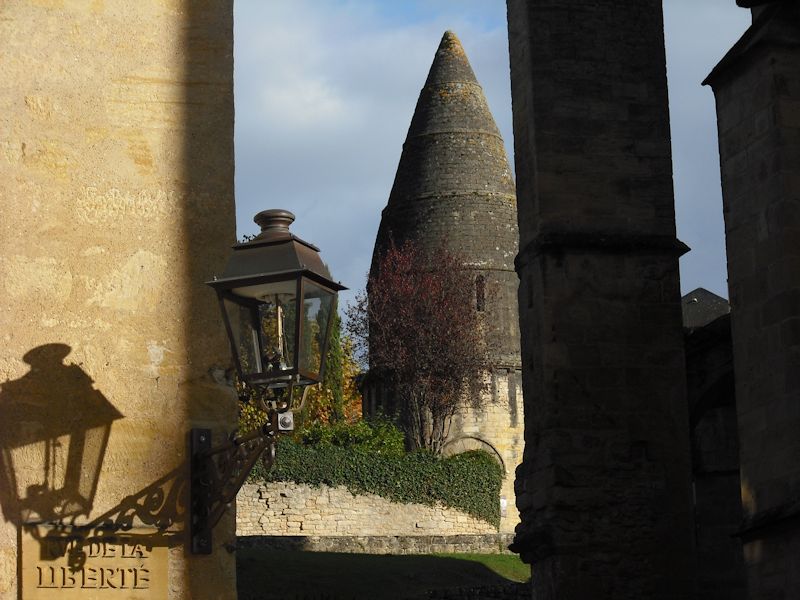
They say that there is a top floor on that thing that has no entrance and hasn't been entered. Creepy.
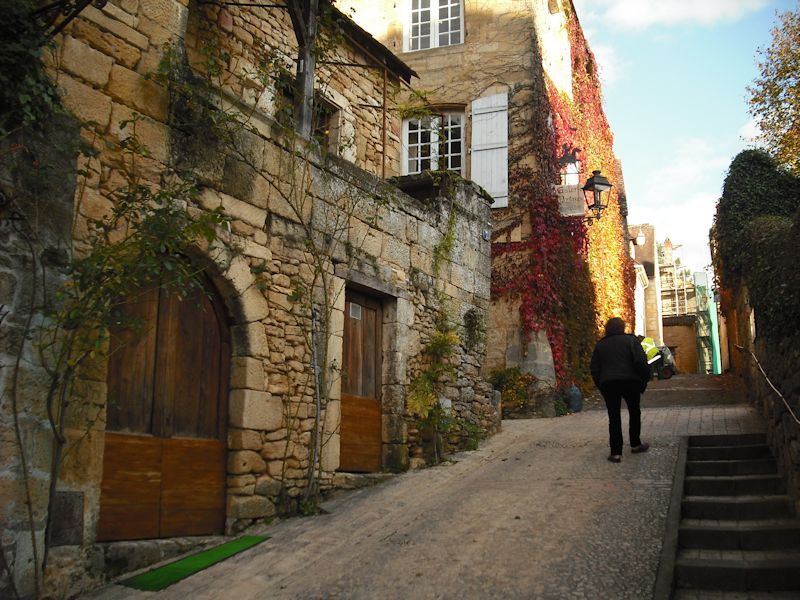
Our B+B just ahead. Now for an hour with the incomparable International Herald Tribune and then the Auberge du Mirandol gets its first real test.
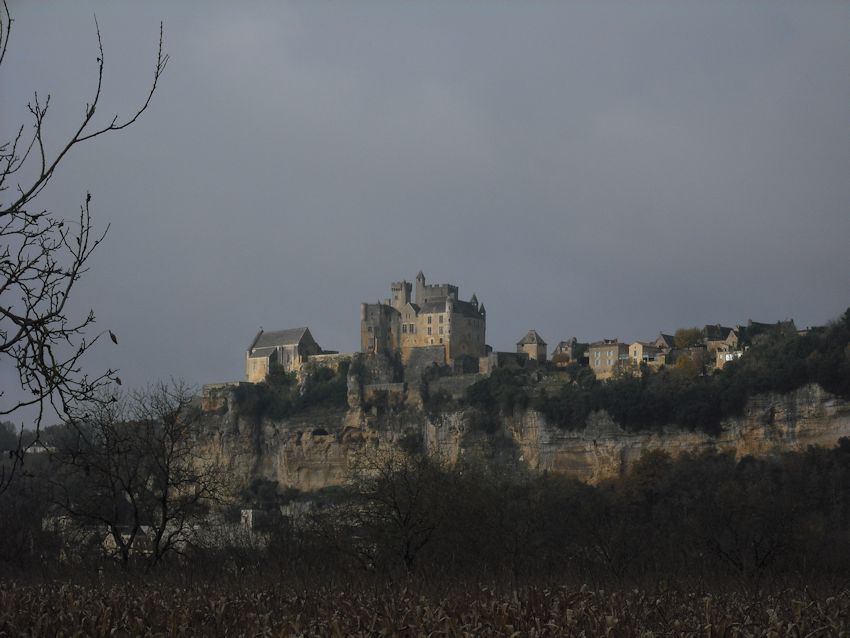
Next day, a visit to nearby Beynac and other castles on the Dordogne, and then back for market day in Sarlat
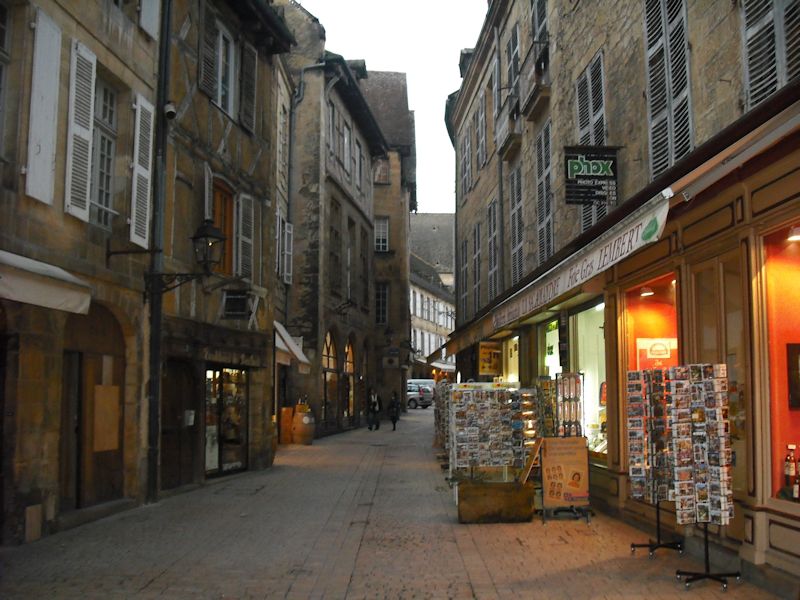
Early evening at the medieval postcard shop

Market day in Sarlat. Our host waits all week for his chance to get the special eggs here, much prized and rationed out, and sometimes he comes home with only one.

Manageable mid-November crowds in the cathedral square today. Imagine July.
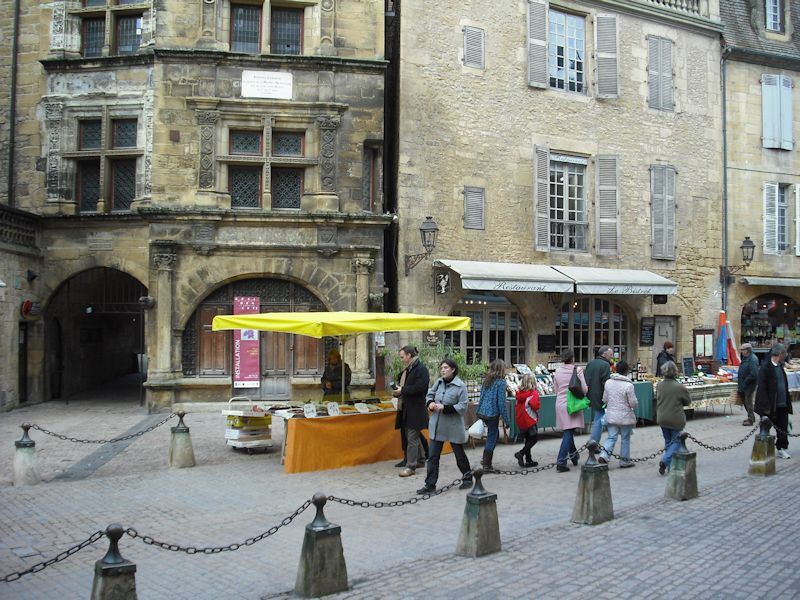
Getting and Spending on market day, in front of Mr Boétie's house.
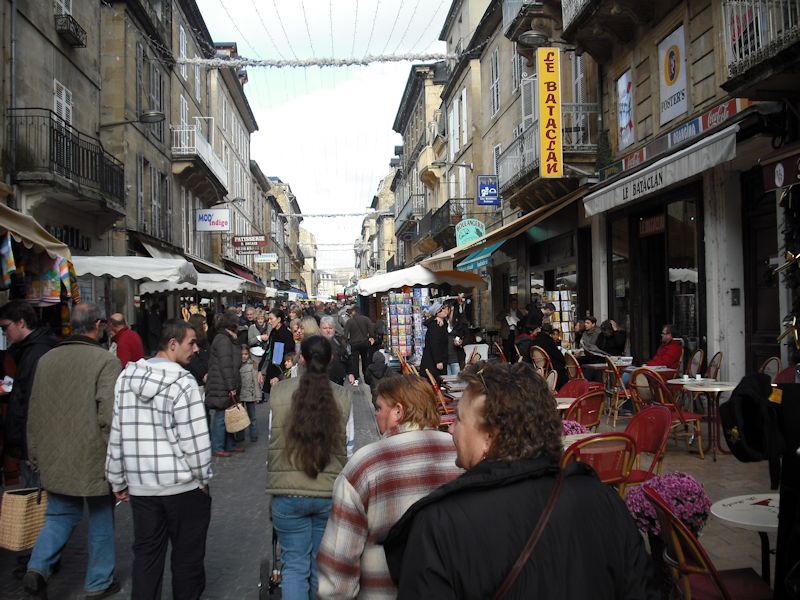
It's market day out on the Rue de la République through-street, too, but with fewer special eggs here, to wait all week for, and more genuine African carvings and leather goods and a wide range of high-quality plastic items.

The onion stand
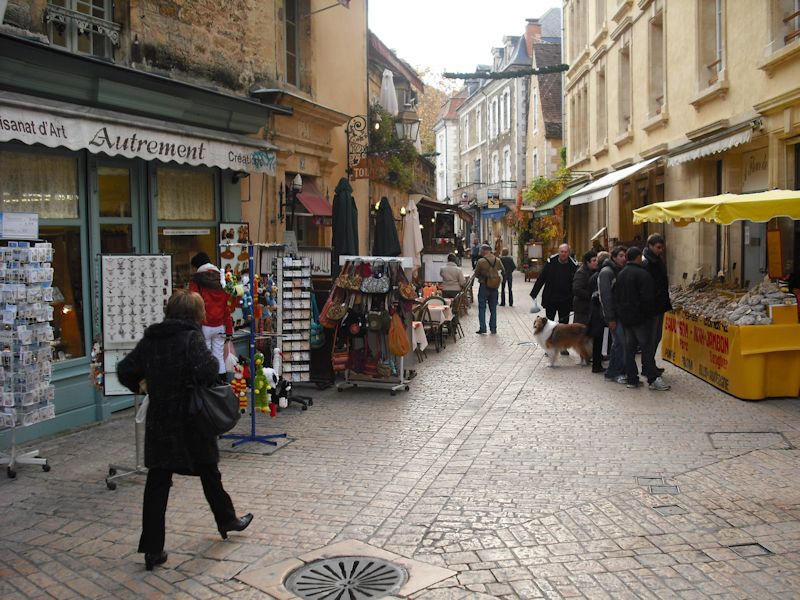

The "Traverse"

Regional craftsmanship

Street scene

Some shoppers seem overwhelmed by the choices on display.
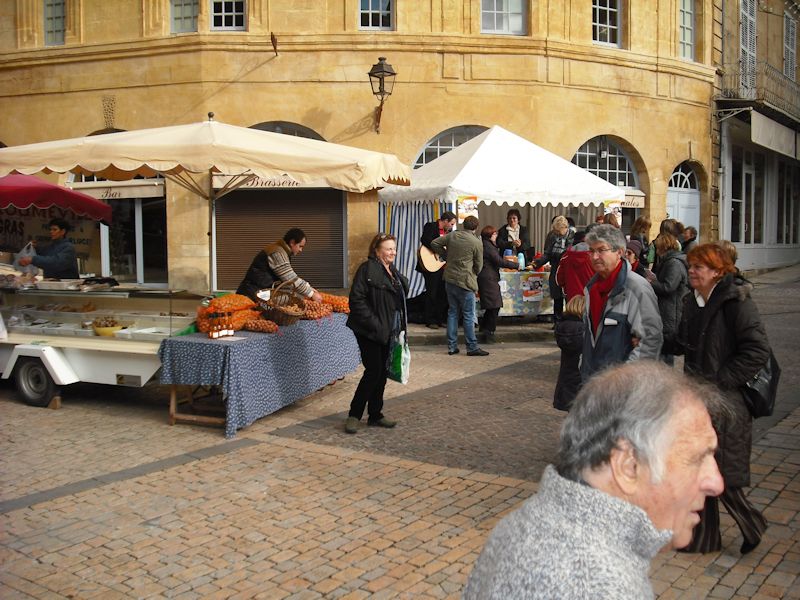
Not even huge bags of garlic can tempt us now.
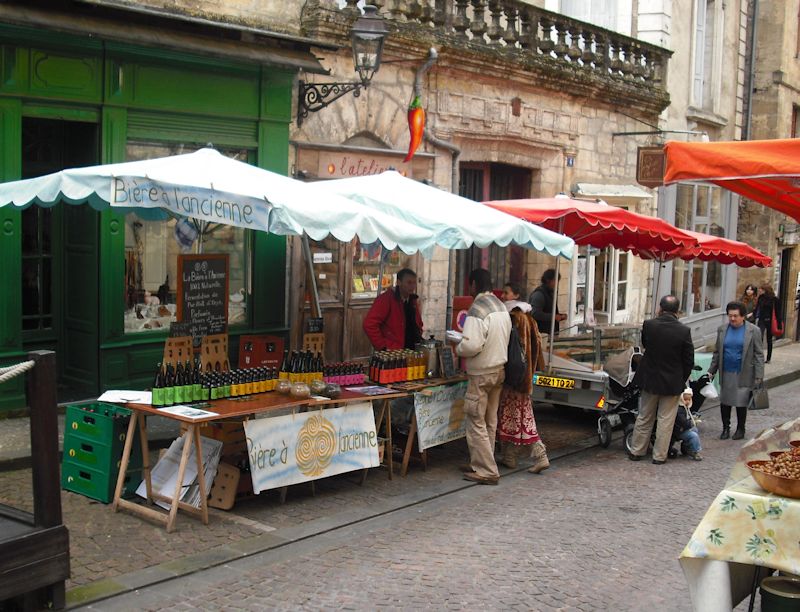
But the beers from the old times are worth a few dreamlike moments.

Now, a last roam about the town, and tomorrow we're off to Carcassonne. To see more sights.
 Dwight Peck's personal website
Dwight Peck's personal website





























































